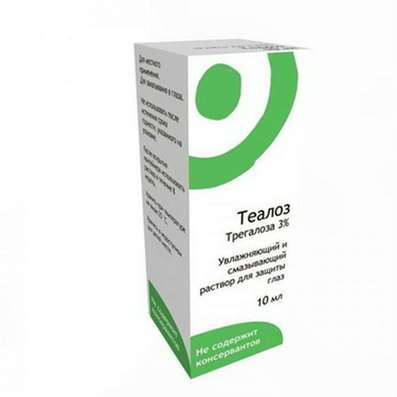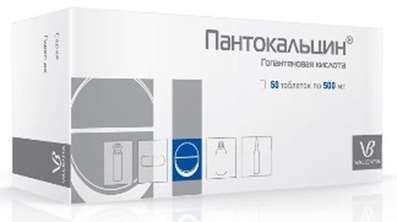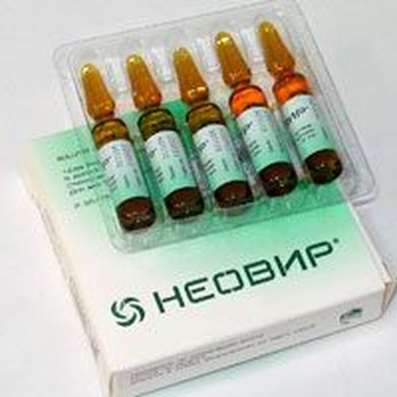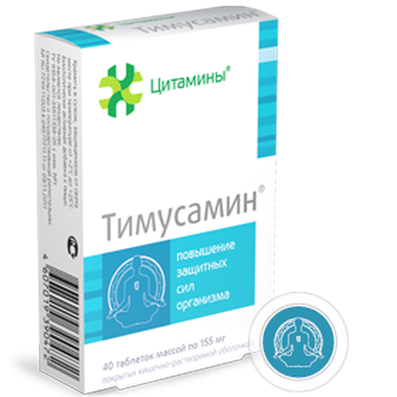Instruction for use: Methylethylpiridinol
I want this, give me price
Trade name of the drug – Emoxipine, Emoxypine solution for injections 1%, Emoxibel, Emoxi-optic, Cardioxipin, Emoxipin-AKOS, Methylethylpyridinol-Eskom, Methylethylpiridinol hydrochloride, Methylethylpiridinol, Vixipine, Emoxipine-Akti
The Latin name of the substance Methylethylpiridinol
Methylaethylpiridinolum (genus. Methylaethylpiridinoli)
Chemical name
2-Ethyl-3-hydroxy-6-methylpyridine
Gross formula
C8H11NO
Pharmacological group:
Angioprotectors and microcirculatory correctors
Antiaggregants
Antihypoxants and antioxidants
Ophthalmic products
The nosological classification (ICD-10)
H11.3 Conjunctival hemorrhage: Hemorrhages in the eye
H16.8 Other forms of keratitis: Allergic keratitis; Traumatic keratitis; Pannus
H26 Other cataracts: Cataract; Cataract radiation; Radial cataracts; Traumatic cataracts; Cataract
H32.8 Other chorioretinal disorders in diseases classified elsewhere
H34 Vascular occlusion of retina: Arterial thrombosis of the vessels of the eye; Venous thrombosis of the vessels of the eye; Violation of retinal circulation; Disturbances of intraocular circulation; Insufficient blood supply to the mesh and choroid; Occlusion of central retinal vessels; Acute obstruction of retinal arteries; Subacute and chronic circulatory insufficiency in the retina or in the choroid of the eye; Vascular diseases of the retina; Vascular disorders in the retina of the eye; Vascular thrombosis of the retina; Central retinal vein thrombosis; Thrombosis of the central vein of the retina and its branches; Thrombosis of the central vein of the retina of the eye and its branches
H36.0 Diabetic retinopathy (E10-E14 + with common fourth character .3): Haemorrhagic diabetic retinopathy; Diabetic retinopathy; Macular degeneration in patients with diabetes
H52.1 Myopia: Nearsightedness; Myopia; Complicated myopia; Myopic chorioretinitis; Progressing myopia; Complicated high degree myopia
H57.8 Other unspecified diseases of eye and adnexa: Intraocular hemorrhage; Inflammation of the eye; Secondary hyperemia of the eye; Burning sensation in the eyes; Protection of the anterior surface of the eye; Itching in the eyes; Xerosis; Sensation of itching and burning eyes; Dry eye syndrome; Dry eyes; Xerophthalmia
H59 Lesions of the eye and its adnexa after medical procedures: Condition after surgery on the eyeball; Condition after plastic surgery on the eyelids; Condition after surgery on the cornea; Condition after surgical eye surgery; Dilation of the pupil after instillation of the mydriatic
I20.0 Unstable angina: heberden disease; Angina pectoris; The attack of angina pectoris; recurrent angina; Spontaneous angina; Stable angina pectoris; Angina rest; Angina progressing; Angina mixed; Angina spontaneous; stable angina; Chronic stable angina; Angina Syndrome X
I21.9 Acute myocardial infarction, unspecified: Changes in left ventricle with myocardial infarction; Changes in the left atrium with myocardial infarction; Myocardial infarction; Myocardial infarction without Q wave; Myocardial infarction without signs of chronic heart failure; Myocardial infarction with unstable angina; Pirouette tachycardia with myocardial infarction
I61 Intracerebral bleeding: apoplectic shock; Apoplexy of the brain; Hematoma subduralnoy; Hematoma epidural; Hemorrhagic stroke; Stroke apoplexy; Hemorrhagic stroke; Hemorrhage in the brain; Intra cerebral hemorrhage; Intra cerebral hemorrhage; Postponed hemorrhagic stroke; Subdural hematoma chronic; Epidural hematomas
I63 Cerebral infarction: ischemic Stroke; Ischemic brain disease; Ischemic stroke; Ischemic stroke and its consequences; Ischemic cerebral stroke; Ischemic cerebrovascular accident; Ischemic brain damage; Ischemic brain damage; ischemic conditions; Cerebral ischemia; Acute hypoxia brain; Acute cerebral ischemia; Acute ischemic cerebrovascular accident; Acute cerebral infarction; Acute ischemic stroke; Acute period of ischemic stroke; Focal cerebral ischemia; Ischemic stroke; recurrent stroke; The syndrome of Morgagni-Adams-Stokes; Chronic cerebral ischemia; cerebrovascular stroke; embolic stroke; Ischemic brain damage
L55 Sunburn: Sunburn
S06 Intracranial injury: Traumatic brain injury; Craniocerebral injury with predominantly stem lesion level; Condition after traumatic brain injury; Brain Injury; Injuries of the skull; Brain Injury; Brain Injuries; Contusion of the brain; Trauma of the brain; Craniocerebral trauma; TBI (traumatic brain injury); Traumatic brain injuries; Consequence of the TBI; Consequence of craniocerebral trauma; Consequence of TBI; CRANIAL INJURY; Traumatic brain injury; Traumatic cerebral; Concussion
T30 Thermal and chemical burns of unspecified site: Pain syndrome with burns; Pain in burns; Pain with burns; Sluggishly healing post-burn wounds; Deep burns with a wet scab; Deep burns with abundant compartments; Deep burn; Laser burn; Burn; Burn of rectum and perineum; Burn with mild exudation; Burn disease; Burn injury; Superficial burn; Superficial burn of I and II degree; Superficial skin burns; After-burn trophic ulcer and wound; Post-burn complication; Loss of fluid during burns; Sepsis burn; Thermal burns; Thermal skin lesions; Thermal burn; Trophic after-burn ulcers; Chemical burn; Surgical burn
T88.8 Other specified complications of surgical and therapeutic interventions, not elsewhere classified: Dumping syndrome
Z100 * CLASS XXII Surgical practice: Abdominal surgery; adenomectomy; Amputation; Coronary angioplasty; Angioplasty of the carotid arteries; Antiseptic skin treatment for wounds; Antiseptic Hand; Appendectomy; atherectomy; Balloon coronary angioplasty; Vaginal hysterectomy; The coronary bypass; Interventions in the vagina and cervix; Interventions on the bladder; Intervention in the mouth; Restoration and reconstructive surgery; Hand hygiene of medical personnel; Gynecologic surgery; Gynecological intervention; Gynecological surgery; Hypovolemic shock during operations; Disinfection of purulent wounds; Disinfection of wounds edges; Diagnostic intervention; Diagnostic procedures; Cervical Diathermocoagulation; Long-surgery; Replacing the fistula catheters; Infection in orthopedic surgery; Artificial heart valve; cystectomy; Short-term outpatient surgery; Short-term operation; Short surgical procedures; Krikotireotomiya; Blood loss during surgery; Bleeding during surgery and in the postoperative period; Kuldotsentez; laser photocoagulation; laser coagulation; retinal laser coagulation; Laparoscopy; Laparoscopy in Gynecology; CSF fistula; Small gynecological operations; Small surgical procedures; Mastectomy and subsequent plastic; mediastinotomy; Microsurgical operations on the ear; Mukogingivalnye operation; suturing; Minor surgery; neurosurgical operation; Immobilization of the eyeball in ophthalmic surgery; testectomy; pancreatectomy; Perikardektomiya; The period of rehabilitation after surgery; The period of convalescence after surgery; Percutaneous transluminal coronary angioplasty; Pleural thoracentesis; Pneumonia postoperative and posttraumatic; Preparation for surgical procedures; Preparation for surgery; Preparation of the surgeon's hands before surgery; Preparation of the colon for surgical procedures; Postoperative aspiration pneumonia in neurosurgical and thoracic surgery; Postoperative nausea; Postoperative bleeding; postoperative granuloma; postoperative shock; The early postoperative period; myocardial revascularization; Radiectomy; gastric Resection; bowel resection; uterine Resection; liver Resection; enterectomy; Resection of part of the stomach; Reocclusion of the operated vessel; Bonding tissues during surgical procedures; Removal of sutures; Condition after eye surgery; Condition after surgery; Condition after surgery in the nasal cavity; Condition after gastrectomy; Status after resection of the small intestine; Condition after tonsillectomy; Condition after removal of the duodenum; Condition after phlebectomy; Vascular surgery; Splenectomy; Sterilization of surgical instruments; Sterilization of surgical instruments; sternotomy; Dental surgery; Dental intervention in periodontal tissues; strumectomy; Tonsillectomy; Thoracic surgery; Thoracic surgery; total gastrectomy; Transdermal intravascular coronary angioplasty; Transurethral resection; Turbinektomiya; Removal of a tooth; cataract surgery; Removal of cysts; tonsillectomy; Removal of fibroids; Removing the mobile primary teeth; Removing polyps; Removing broken tooth; Removal of the uterus body; Removal of sutures; Fistula likvoroprovodyaschih ways; Frontoetmoidogaymorotomiya; Surgical infection; Surgical treatment of chronic limb ulcers; Surgery; The surgery in the anal area; The surgery on the colon; Surgical practice; The surgical procedure; Surgical interventions; Surgery on the gastrointestinal tract; Surgical procedures on the urinary tract; Surgical procedures on the urinary system; Surgical intervention of the genitourinary system; Surgical procedures on the heart; Surgical manipulation; surgery; Surgery on the veins; Surgical intervention; Vascular surgery; Surgical treatment of thrombosis; Surgery; cholecystectomy; Partial gastric resection; hysterectomy; Percutaneous transluminal coronary angioplasty; Percutaneous transluminal angioplasty; Coronary artery bypass; tooth Extirpation; Extirpation of milk teeth; pulpectomy; pulsative cardiopulmonary bypass; tooth Extraction; teeth Extraction; cataract extraction; Electrocoagulation; endourological intervention; episiotomy; Etmoidotomiya; Complications after tooth extraction
Z98.8 Other specified post-surgical conditions: Purulent complications in the postoperative period; Purulent complications of surgical operations; Postoperative liver dysfunction; Postoperative vomiting; Postoperative complications; Postoperative period; Early postoperative period
CAS Code
2364-75-2
Model clinical-pharmacological article 1
Pharmacotherapy. Angioprotector, reduces the permeability of the vascular wall, is an inhibitor of free radical processes, an antihypoxant and an antioxidant. Reduces blood viscosity and platelet aggregation, increases the content of cyclic nucleotides (cAMP and cGMP) in platelets and brain tissue, has fibrinolytic activity, reduces the permeability of the vascular wall and the risk of developing hemorrhages, contributes to their resorption. Expands coronary vessels, in the acute period of myocardial infarction limits the magnitude of the focus of necrosis, improves the contractility of the heart and the function of its conductive system. With increased blood pressure has an antihypertensive effect. When acute ischemic impairment of cerebral circulation reduces the severity of neurologic symptoms, increases tissue resistance to hypoxia and ischemia. It has retinoprotective properties, protects the retina from the damaging effect of high-intensity light, promotes resorption of intraocular hemorrhages, improves microcirculation of the eye.
Indication. As part of complex therapy: the consequences of cerebrovascular disorders of ischemic and hemorrhagic nature, TBI, the postoperative period of epi- and subdural hematomas; Acute myocardial infarction, prevention of reperfusion syndrome, unstable angina. Subconjunctival and intraocular hemorrhage, angioretinopathy (including diabetic), chorioretinal dystrophy (including atherosclerotic genesis), dystrophic keratitis, retinal vascular thrombosis, complications of myopia, protection of the cornea (when wearing contact lenses) and the retina of the eye from exposure Light of high intensity (laser and sunburn, with laserocoagulation), trauma, inflammation and burn of the cornea, cataracts (including prophylaxis in individuals over 40 years of age), surgical eye interventions, postoperative glaucoma .
Contraindications. Hypersensitivity, pregnancy.
Dosing. In neurology and cardiology - in / in drip (20-40 cap / min), 20-30 ml of 3% solution (600-900 mg) 1-3 times a day for 5-15 days (previously the preparation is diluted in 200 Ml 0.9% NaCl solution or 5% dextrose solution). The duration of treatment depends on the course of the disease. Subsequently, they switch to the / m administration - 3-5 ml of a 3% solution 2-3 times a day for 10-30 days.
In ophthalmology - subconjunctival or parabulbar, once a day or every other day. Subconjunctival - 0.2-0.5 ml of 1% solution (2-5 mg), parabulbar - 0.5-1 ml of 1% solution (5-1 mg). Duration of treatment - 10-30 days; It is possible to repeat the course 2-3 times a year.
If necessary - retrobulbarno for 0.5-1 ml of 1% solution once a day for 10-15 days.
To protect the retina in lacerocoagulation (including with limiting and destructive coagulation of tumors) - parabulbar or retrobulbarno for 0.5-1 ml of 1% solution for 24 hours and 1 hour before coagulation; Then in the same doses (0.5 ml of 1% solution) once a day for 2-10 days.
Side effect. Short-term excitation, drowsiness, increased blood pressure, allergic reactions (skin rashes, etc.), local reactions - pain, burning, itching, hyperemia, densification of paraorbital tissues (resolves itself).
Interaction. Pharmaceutically incompatible with other drugs.
Special instructions. Treatment should be carried out under the control of blood pressure and blood coagulability.

 Cart
Cart





